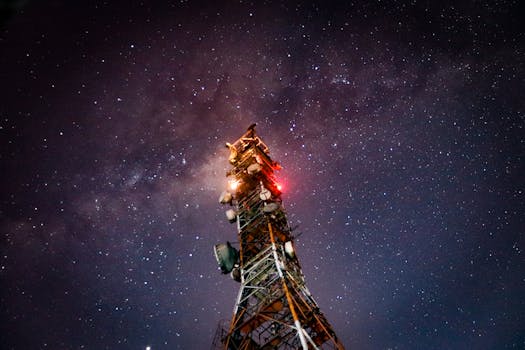
Introduction to Starlink
Starlink, the focus keyword, is a revolutionary satellite constellation developed by SpaceX, founded by Elon Musk. The primary objective of Starlink is to provide high-speed, low-latency internet connectivity globally, particularly in areas where traditional fiber-optic infrastructure is lacking. This ambitious project aims to bridge the digital divide, transforming the way people communicate, access information, and conduct businesses.
How Starlink Works
Starlink operates by launching thousands of small satellites into low Earth orbit (LEO), approximately 340 miles above the Earth’s surface. Each satellite is equipped with advanced technology, including Hall effect thrusters for propulsion, star trackers for navigation, and a compact, high-gain antenna system for communication. The satellites communicate with ground stations, called gateways, which are connected to the global internet backbone. Users access the Starlink network using a compact, phased-array antenna, which communicates with the satellites overhead, providing a reliable and secure internet connection.
Benefits of Starlink
The Starlink constellation offers numerous benefits, including global coverage, high-speed connectivity, low latency, and mobility. With Starlink, users can access the internet from anywhere, whether in remote areas, on-the-go, or in areas affected by natural disasters. The network is also designed to be highly secure, with end-to-end encryption and advanced threat detection. Furthermore, Starlink has the potential to support a wide range of applications, including online education, telemedicine, and emergency response services.
Technological Advancements
Starlink has driven significant technological advancements in the field of satellite communication. The development of compact, high-gain antennas and advanced propulsion systems has enabled the creation of smaller, more efficient satellites. Additionally, the use of artificial intelligence and machine learning algorithms has improved the network’s performance, enabling real-time traffic management and optimization. The Starlink constellation has also spurred innovation in areas such as materials science, with the development of new, lightweight materials for satellite construction.
Challenges and Limitations
Despite the numerous benefits and technological advancements, the Starlink project faces several challenges and limitations. One of the main concerns is the risk of space debris, with thousands of satellites potentially contributing to the growing problem of orbital pollution. Additionally, there are regulatory hurdles, with governments and international organizations working to establish guidelines for the deployment and operation of large satellite constellations. The project also faces competition from other satellite internet providers, such as OneWeb and Amazon’s Kuiper Systems.






